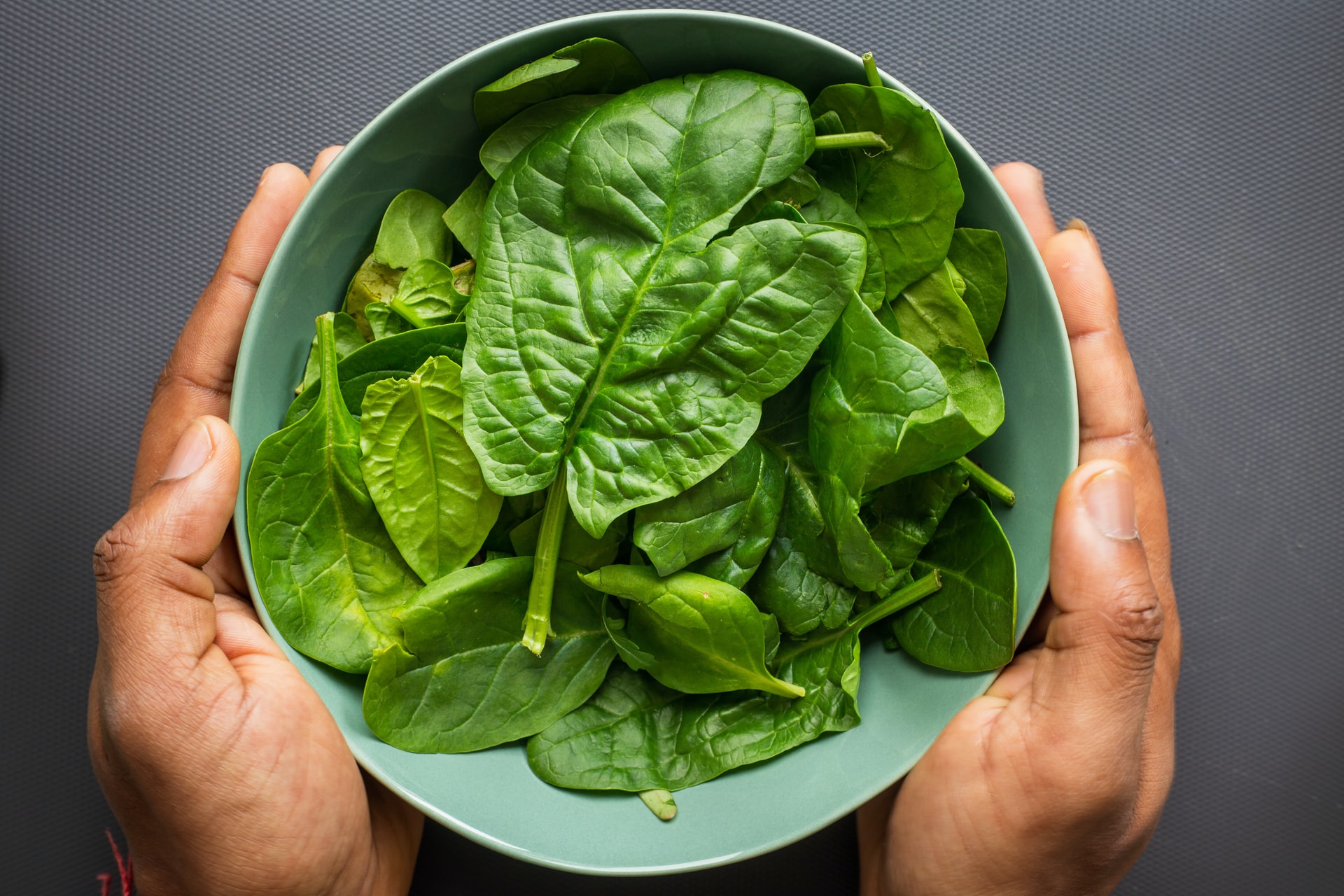Spinach is a member of the chenopod family that includes beets, chard and quinoa.
Food experts are hard-pressed to find another vegetable as nutrient-rich as spinach. The vibrant green leaves are available year-round, though technically the growing season runs March through May and September through October.
There are three varieties of spinach: savoy, smooth-leaf and semi-savoy. Savoy spinach leaves are noted for their crispness and curled appearance. Smooth-leaf spinach leaves are spade-shaped with a smooth and flat appearance, while semi-savoy resembles a less-wrinkled savoy leaf.
The spinach plant is believed to have originated in Ancient Persia, what is now known as Iran. It made its way to China during the seventh century and has a relatively short history in Europe compared to other vegetables. The Moors introduced the tender leaves to Spain in the eleventh century, and in England, spinach was referred to as a “Spanish vegetable” for years.
The popularity of spinach spread — it was the favorite green of Catherine de Medici who brought her own cooks to France to prepare it for her. Today the United States and the Netherlands are two of the top producers of spinach globally.
Nutritional profile
Spinach leaves are second only to kale when it comes to nutrient levels. Other vegetables pale in comparison to the concentrations of vitamins and minerals found in the green leaves. Spinach contains the following:
- Vitamin K
- Vitamin A
- Manganese
- Vitamin E
- Folate
- Calcium
- Vitamin C
- Copper
- Zinc
- Selenium
- B-Complex vitamins
- Fiber
- Omega 3 fatty-acids
Besides liking spinach because Popeye eats it, here are some extraordinary health benefits that will convince you to eat more of this delicious green vegetable.
Cancer
Doctors have known for a long time that cancer is caused by healthy cells that mutate into dangerous cancer cells. Cancer cells are often present as stem cells. Researchers are now finding that cancer cells are present at birth, but may be “switched on” to encourage the growth of cancerous tumors. This can occur when certain foods such as grilled or processed meats are consumed, or when a person is exposed to dangerous environmental toxins like asbestos.
Rich in cancer-fighting antioxidants, spinach can fight free radicals that cause cancer and contribute to aging. While some consumers are concerned about spinach that is packaged in plastic bags and placed on display under florescent lights in grocery stores, researchers have found that these lights do not damage the vegetable at all.
It has been found that spinach is one of the few vegetables that fights against aggressive forms of prostate cancer, defined as stage 3 or 4. Other green leafy vegetables that fight aggressive forms of cancer include kale, collard greens, mustard greens and turnip greens. The presence of epoxy xanthophyll is thought to be one of the primary reasons greens are so effective in fighting cancer. Turns out, Popeye wasn’t that far off after all!
Asthma
Spinach is high in beta-carotene, a nutrient that helps to lower the risk of developing asthma. Other excellent sources of beta-carotene include carrots, pumpkins, apricots, and broccoli.
Blood sugar
Spinach contains an antioxidant called alpha-lipoic acid which, taken intravenously, has been shown to increase insulin sensitivity, decrease glucose levels, and help to prevent changes caused by oxidative stress in diabetic patients.
Skin and hair
Spinach is high in vitamin A and vitamin C, both of which are important for healthy hair and nails. Vitamin A is necessary for the production of sebum, which moisturizes the hair. It also plays an important role in the growth of all bodily tissue, including skin and hair. Vitamin C is crucial for the maintenance of collagen.
Blood pressure
It is thought that a low intake of potassium may be just as much of a risk factor when it comes to developing high blood pressure as a high intake of sodium. Luckily, spinach is an excellent source of potassium, as are tomatoes, lima beans, oranges, and yogurt.
Regularity
Spinach has a high water content and is an excellent source of fiber, both of which help to prevent constipation and promote overall digestive health.
Muscular health
Researchers at the Karolinska Institute in Sweden found that subjects who consumed 300 grams of spinach a day required five percent less oxygen to power their muscles while exercising. The improved efficiency of their muscles was seen after just three days of eating spinach.
Eye health
Spinach is a rich source of beta-carotene, lutein and xanthene, all of which are important for eye health. It can help to minimize itching or dry eyes. The anti-inflammatory properties of spinach can help to reduce eye puffiness and irritation. It can also help to minimize the effects of age-related macular degeneration.
Neurological benefits
Potassium, folate, and the antioxidants found in spinach can provide a range of neurological benefits. It can reduce the occurrence of Alzheimer’s, increase blood flow to the brain, and improve cognition and concentration.
Metabolic health
The proteins in spinach — which are broken down into amino acids — promote muscle growth, support the body’s ability to heal, and offer a boost to the body’s metabolic function as a whole, helping all organs to function at peak performance.
Cholesterol
Spinach proteins can help to reduce cholesterol and other fat deposits in the blood vessels. This can lower the risk of atherosclerosis caused by a hardening of the arteries, as well as heart attacks and strokes.
Fetal health
Spinach is an excellent choice for pregnant women because it is high in folate, which is important to proper fetal development. In addition, spinach is high in vitamin A, which supports healthy fetal growth.


